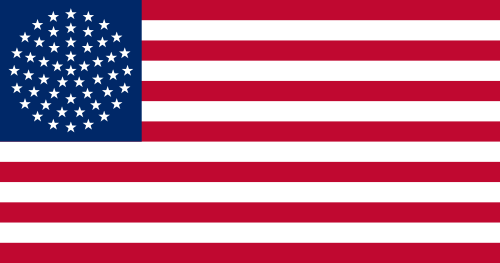
Image Credit: Wikimedia Commons
This could be the new flag of the United States of America. Fifty-one stars. In November 2012, Puerto Rico voted in a referendum to become the fifty-first state of the USA. The measure now awaits approval from the U.S. Congress. Whether the representatives of the fifty states will invite in Puerto Rico, currently a U.S. territory, depends, of course, on a number of factors: culture, taxes, how it would change the political dynamics of the country, among others. But there's another big deciding influence at play here, though it is less tangible, and that is how a fifty-first state would change the appearance of the U.S. flag. Why would that matter? Because the arrangement of the stars on the flag has everything to do with belief in Manifest Destiny.
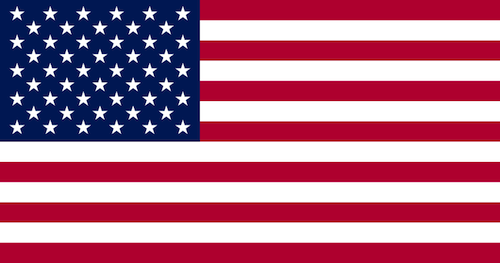
Image Credit: Wikimedia Commons
U.S. destiny made manifest in fifty stars, arranged neatly in offset rows. Fifty: not just a round number but somehow, to our simian brains, it seems a solid one. The design of the current flag reflects, I would argue, a sense of arrival. Half a hundred states. But the U.S. flag only got its fiftieth star in 1960.
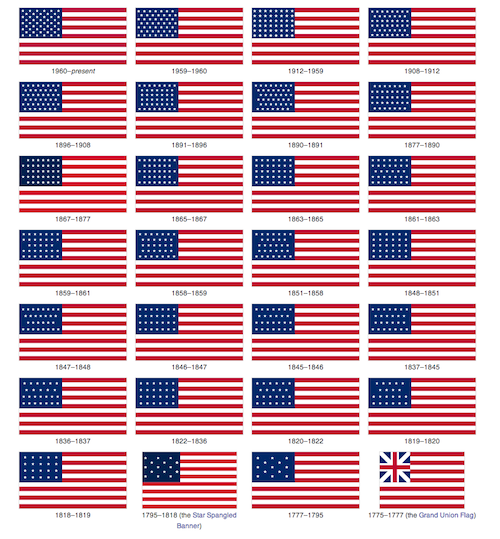 Image Credit: Wikimedia Commons
Image Credit: Wikimedia Commons
The symmetry of the stars has not always appeared so manifest. Fewer stars make for a more contingent, not to say temporary, look. And odd numbers added another challenge.
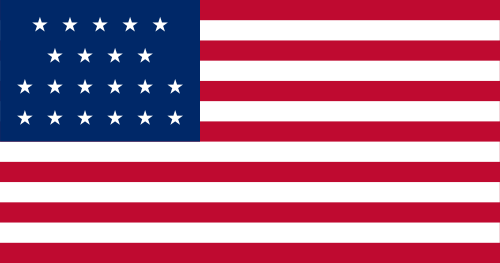
U.S. Flag from 1819-1820: 21 stars (After Illinois before Alabama and Maine)
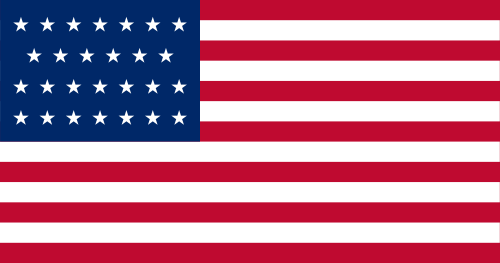
U.S. Flag from 1845-46: 27 Stars (After Florida before Texas)
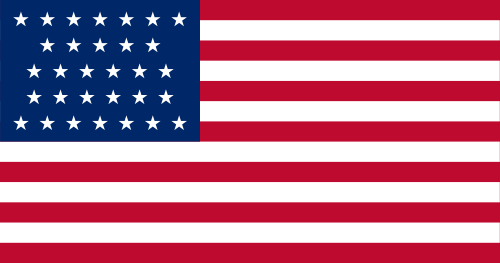
U.S. Flag from 1851-1858: 31 Stars (After California before Minnesota)
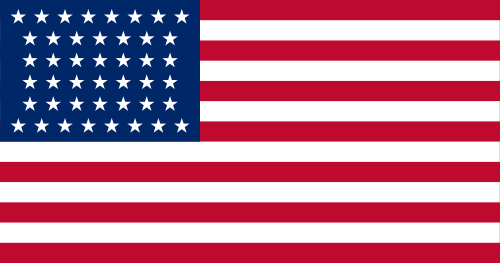
U.S. Flag from 1867-1877: 37 Stars (After Nebraska before Colorado)
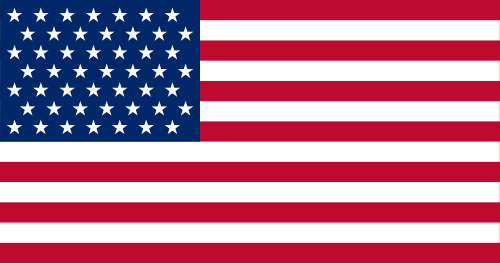
U.S. Flag from 1959-1960: 49 Stars (After Alaska before Hawaii)
Images from Wikimedia Commons
Thirty-one stars was a particularly awkward phase. But there is something wrong about that observation. As if the U.S. were a teenager in the 1850s. There is frankly too much suffering in the story of how the flag got its fifty stars to permit such a flippant trope. As if westward expansion, the imperialist policies of nineteenth-century USA, were motivated, even in part, by the desire for a more symmetrical seeming flag!
Might there soon be a fifty-first star? Will the democracy give up the notion of U.S. exceptionalism and go with a more contingent looking flag? Or will it seek to maintain the mythos of symmetry?
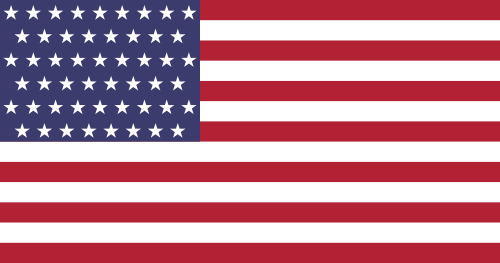
Image Credit: Wikimedia Commons
Alternate Pattern for 51 stars
What sort of "united" would a country of fifty-one states wish to project? Circled wagons or side-by-side, independent but joined in rank and file? The importance of the psychological effect of the arrangement of the stars on the flag should not be underestimated. The circular pattern which heads up this post was, according to Wikipedia, proposed by the New Progressive Party of Puerto Rico, which is the party that advocates for full statehood. What new image of the USA would a circular pattern instill in the hearts and minds of citizens? Who makes up such a USA? What are its policies? With what attitude do the states regard one another? What destiny does it manifest? What destiny does the country wish to be made manifest?
Recent comments
2 years 29 weeks ago
2 years 44 weeks ago
2 years 44 weeks ago
2 years 50 weeks ago
3 years 4 weeks ago
3 years 4 weeks ago
3 years 4 weeks ago
3 years 6 weeks ago
3 years 6 weeks ago
3 years 6 weeks ago